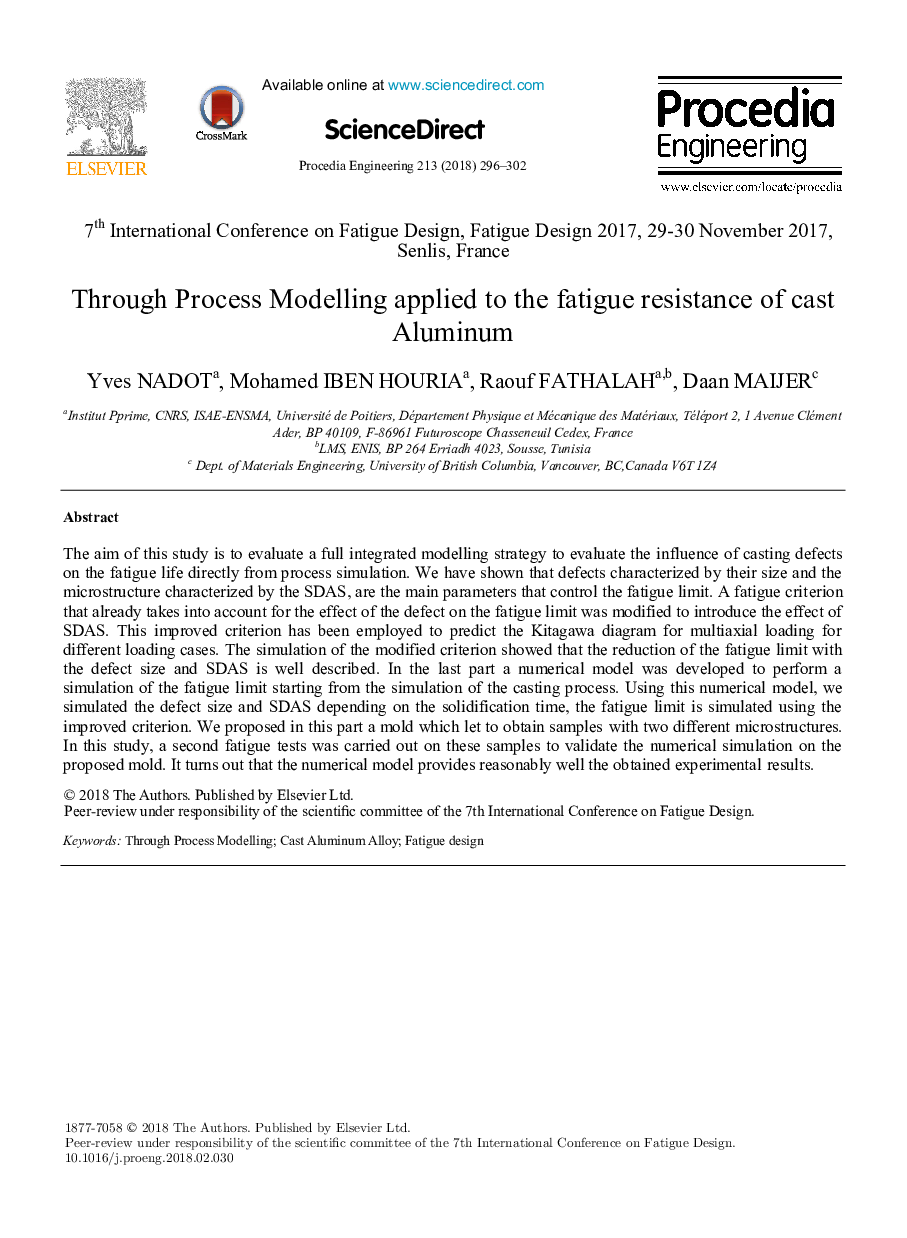| Article ID | Journal | Published Year | Pages | File Type |
|---|---|---|---|---|
| 7225558 | Procedia Engineering | 2018 | 7 Pages |
Abstract
The aim of this study is to evaluate a full integrated modelling strategy to evaluate the influence of casting defects on the fatigue life directly from process simulation. We have shown that defects characterized by their size and the microstructure characterized by the SDAS, are the main parameters that control the fatigue limit. A fatigue criterion that already takes into account for the effect of the defect on the fatigue limit was modified to introduce the effect of SDAS. This improved criterion has been employed to predict the Kitagawa diagram for multiaxial loading for different loading cases. The simulation of the modified criterion showed that the reduction of the fatigue limit with the defect size and SDAS is well described. In the last part a numerical model was developed to perform a simulation of the fatigue limit starting from the simulation of the casting process. Using this numerical model, we simulated the defect size and SDAS depending on the solidification time, the fatigue limit is simulated using the improved criterion. We proposed in this part a mold which let to obtain samples with two different microstructures. In this study, a second fatigue tests was carried out on these samples to validate the numerical simulation on the proposed mold. It turns out that the numerical model provides reasonably well the obtained experimental results.
Keywords
Related Topics
Physical Sciences and Engineering
Engineering
Engineering (General)
Authors
Yves Nadot, Mohamed Iben Houria, Raouf Fathalah, Daan Maijer,
